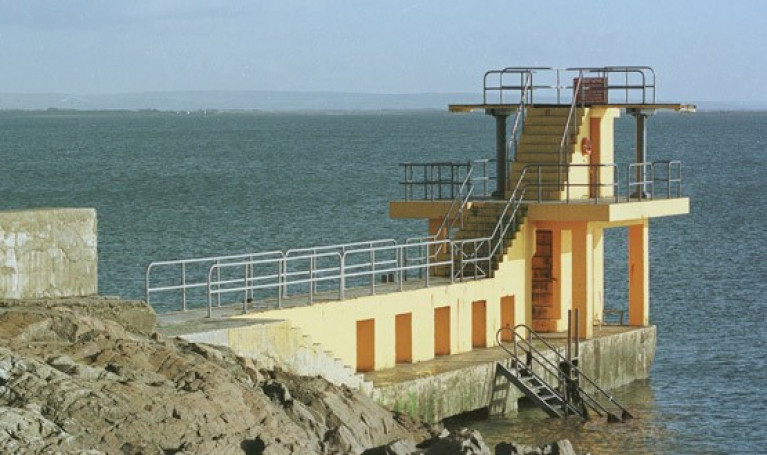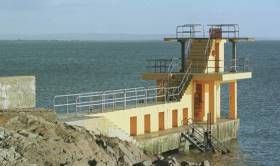Displaying items by tag: Blackrock Diving Tower
Galway’s iconic diving tower at Blackrock, Salthill, will be the subject of “rolling closures” over the next fortnight to allow for maintenance work
Galway City Council began work on the tower earlier this week, with power washing, followed by painting.
However, limited access allowed for a full moon dip by the “ Blackrock howlers”, marking the moon rise at 2120 on Friday night.
A sunrise swim to mark Pieta House’s “Darkness into Light “ fundraising walk was also scheduled for Ladies Beach at 5.30 am on Saturday.
Galway City Council says that the intention is to “prioritise the painting of the tower as quickly as possible”.
However, it noted that it was “weather dependant, hence the need for potential rolling closures”.
An Tostal regatta
Swimmers are asked to keep close to the vicinity of Blackrock Tower from 1300 on both Saturday and Sunday, while rowing and sailing take place off Salthill for An Tostal regatta.
Salthill’s Blackrock Diving Tower reopened yesterday (Wednesday 12 August) with Galway city officials keeping a watchful eye after it was closed following reports of overcrowding, according the Connacht Tribune reports.
Access to the tower was barred on Tuesday amid social distancing fears as crowds made the most of the sunny weather to take a dip in the warming waters of Galway Bay — which may have also helped keep alive two paddle boarders rescued earlier today after 15 hours at sea.
A spokesperson said the council will continue to monitor crowds at the tower to ensure social distancing in the queue to the platform is maintained.
The Connacht Tribune has more on the story HERE.
Public Hearing In Galway On Blackpool Diving Tower Upgrades
#Galway - Next Wednesday is the date for a public consultation on planned upgrades and repairs to the Blackpool Diving Tower in Salthill.
As the Galway Advertiser reports, the hearing will take place at the Salthill Hotel from 7pm to 10pm on Wednesday 30 March.
Viral Video Shows Dangerous Salthill Storm Swimming 'Stunt'
#StormDesmond - It was a 'red' alert for western coastal counties this weekend as Storm Desmond blew in from the Atlantic with extreme gusts and downpours.
But amid the damage and disruption across the country, Galway-based photographer Cathal Devlin took to social media to share his dismay at the recklessness of two would-be divers who decided the stormy conditions presented the perfect time to take a dip.
Devlin's video of the "stunt" at Blackrock Diving Tower in Salthill – which clearly shows the young men ignoring basic water safety advice by diving into rough seas, with blasts of spray occasionally obscuring the pier – has gone viral in the 24 hours since he first uploaded it to Facebook. But he says he did not post it for entertainment purposes.
"I do not know if they are strong swimmers or not, that is not the case," Devlin writes. "If any one of them got into difficulties there was no one there to do anything for them.
"The voluntary and rescue services are kept busy enough without having to worry about this type of stupid behaviour."

























































